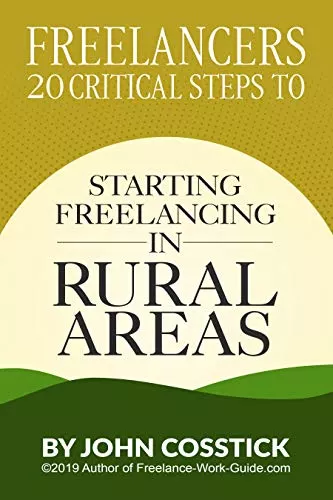In an era where AI helps produce much of the news we consume, a hidden threat is quietly undermining the truth — AI hallucinations.
A recent study revealed that nearly 20% of news articles generated using artificial intelligence contain misinformation, raising concerns about the credibility of journalism in the digital age.
The phenomenon of AI hallucinations, where machine learning models produce false or misleading information, is becoming increasingly prevalent. This not only compromises the accuracy of news reporting but also erodes trust in media outlets.

As artificial intelligence becomes more integrated into newsrooms, the risk of AI-generated misinformation grows. Journalists and media organizations must be aware of these risks and take steps to mitigate them.
Key Takeaways
- The rise of AI-generated content is linked to an increase in misinformation.
- Journalism credibility is at risk due to AI hallucinations.
- Machine learning media manipulation can have far-reaching consequences.
- News organizations must develop strategies to combat AI-generated misinformation.
- Awareness and education are key to mitigating the risks associated with AI in journalism.
The Rise of AI in Modern Journalism
Journalism is undergoing a significant transformation with the advent of AI technologies. The use of artificial intelligence in newsrooms is becoming increasingly prevalent, changing the way journalists work and how news is produced.
Current AI Applications in Newsrooms
AI is being utilized in various aspects of journalism, from content generation to research and data analysis. Content Generation Tools are being used to automate the creation of news articles, particularly for straightforward, data-driven stories.
Content Generation Tools
These tools enable news organizations to produce a high volume of content quickly, freeing up journalists to focus on more complex reporting tasks.
Research Assistants and Data Analysis
AI-powered research assistants are helping journalists analyze large datasets, identify patterns, and uncover insights that might otherwise remain hidden. This capability is significantly enhancing the quality and depth of news reporting.
The Promise of AI-Assisted Reporting
AI-assisted reporting holds great promise for enhancing journalism. By automating routine tasks, AI allows journalists to devote more time to investigative reporting and in-depth analysis.
Adoption Rates Among Major Media Outlets
Major media outlets are increasingly adopting AI technologies. For instance, The Associated Press and Reuters have been at the forefront of integrating AI into their news production processes.
The adoption of AI in journalism is not without its challenges, but the potential benefits are substantial. As AI technologies continue to evolve, their role in shaping the future of journalism is likely to grow.
Understanding AI Hallucinations: A Technical Breakdown
The phenomenon of AI hallucinations has become a pressing concern in modern journalism, necessitating a deep dive into the technical underpinnings of this issue. AI hallucinations refer to the generation of false or fabricated content by AI systems, particularly large language models. To comprehend this phenomenon, it’s essential to examine the technical causes behind it.
What Causes AI to “Hallucinate” Information
AI hallucinations are primarily attributed to two factors: the limitations of training data and pattern recognition failures. Training data limitations occur when the data used to train AI models is incomplete, biased, or outdated, leading to gaps in the model’s understanding and generation capabilities.
Large Language Models and Fabricated Content
Large language models are particularly prone to hallucinations due to their complex architecture and reliance on vast amounts of training data. Pattern recognition failures in these models can result in the generation of content that is not grounded in reality.
Training Data Limitations
The quality and diversity of training data directly impact the performance of large language models. Limitations in training data can lead to overfitting or underfitting, where the model either memorizes the training data or fails to capture important patterns.
Pattern Recognition Failures
Pattern recognition failures occur when AI models misinterpret or overgeneralize patterns in the training data. This can result in the generation of fabricated content that seems plausible but lacks factual basis.
The Technical Limitations of Current AI Systems
Current AI systems, despite their advancements, have inherent technical limitations. These include the inability to fully understand context, nuances, and the subtleties of human language. Addressing these limitations is crucial for reducing AI hallucinations and improving the reliability of AI-generated content in journalism.
How AI Hallucinations Are Undermining Journalism
The increasing reliance on AI in journalism is leading to a concerning trend: AI hallucinations are undermining the integrity of factual reporting. As newsrooms integrate AI tools to enhance productivity, they are inadvertently introducing risks that threaten the core principles of journalism.
The Fundamental Threat to Factual Reporting
AI hallucinations happen when AI systems produce information that isn’t grounded in real facts. This can be anything from small errors to completely false stories — a serious risk to the accuracy and trustworthiness of the news we rely on.. This fabricated content can range from minor inaccuracies to entirely false narratives, posing a significant threat to the accuracy and reliability of news stories.
The fundamental issue is that AI hallucinations can create misleading information that is difficult to distinguish from factual reporting.
Erosion of Source Verification Processes
One of the critical aspects of journalism is the verification of sources. AI-generated content can complicate this process by introducing unverified or fabricated sources. This erosion of source verification processes can lead to a decline in the trustworthiness of news outlets.
Speed vs. Accuracy: The New Dilemma
The pressure to publish news quickly in the digital age has always been a challenge. With AI-generated content, this pressure can lead to a trade-off between speed and accuracy.
Competitive Pressures in Digital News
In the competitive landscape of digital news, outlets are under pressure to publish stories quickly to stay ahead. AI-generated content can exacerbate this issue by prioritizing speed over accuracy, potentially leading to the dissemination of misinformation.
Breaking News Vulnerabilities
During breaking news events, the pressure to publish quickly is even more pronounced. AI systems can generate content rapidly, but they may not always have the context or accuracy required for reliable reporting. This can lead to vulnerabilities in reporting, where inaccuracies or misinformation can spread quickly.
To mitigate these risks, news organizations must implement robust verification processes and ensure that AI-generated content is thoroughly reviewed for accuracy. By doing so, they can maintain the integrity of their reporting and uphold the trust of their readers.
Notable Cases of AI Hallucinations in News Media
Several notable cases have emerged where AI hallucinations have compromised the integrity of news reporting. These incidents highlight the challenges faced by news organizations in maintaining accuracy and trustworthiness in their AI-generated content.
The Sports Illustrated AI-Generated Content Scandal
In reported cases, such as Sports Illustrated’s AI-generated articles that included fabricated athlete profiles, newsrooms have faced backlash and scrutiny over oversight and verification processes.[2] Similarly, CNET experienced challenges with AI-written financial articles containing inaccuracies and outdated information, prompting a review of their editorial workflows.[3] These examples highlight the critical need for human oversight in AI-assisted journalism.
CNET’s AI-Written Financial Articles Controversy
CNET encountered issues with AI-written financial articles that contained inaccuracies and outdated information. The controversy led to a reevaluation of CNET’s content creation processes and the role of human editors in AI-assisted reporting.
Political Reporting Errors Attributed to AI Tools
AI tools have also been linked to errors in political reporting, including misinformation during election coverage and inaccuracies in policy analysis.
Election Coverage Misinformation
During recent election cycles, AI-generated content has been associated with the dissemination of misinformation, including incorrect polling data and misleading analysis.
Policy Analysis Inaccuracies
AI tools used for policy analysis have sometimes produced inaccurate or outdated information, potentially influencing public opinion and policy decisions.
These cases underscore the need for robust verification processes and human oversight in AI-assisted journalism to prevent the spread of misinformation.
The Psychology Behind Misinformation Acceptance
As AI-generated falsehoods proliferate, understanding the psychological factors behind misinformation acceptance is crucial. The digital landscape has transformed how information is consumed and disseminated, making it imperative to explore the psychological underpinnings of why readers believe AI-generated falsehoods.
People often believe AI-generated falsehoods because the information sounds plausible and fits what they already think. AI systems create content that feels coherent and credible, making it easy to trust — especially when there are no obvious mistakes.
Why Readers Believe AI-Generated Falsehoods
People often believe AI-generated falsehoods because the information sounds plausible and fits what they already think. AI systems create content that feels coherent and credible, making it easy to trust — especially when there are no obvious mistakes.
Confirmation Bias in the Digital Age
Confirmation bias plays a significant role in misinformation acceptance.Simply put, we tend to believe things that confirm what we already think or feel. Social media makes this worse by showing us more of the same ideas, creating “echo chambers” that reinforce our views.
People tend to believe information that confirms their pre-existing beliefs or biases. The digital age has exacerbated this issue, as social media platforms often create “echo chambers” that reinforce existing views.
- Pre-existing beliefs are reinforced by selective exposure to information.
- Social media algorithms often prioritize content that aligns with a user’s past interactions.
- The result is a skewed perception of reality, where misinformation is more readily accepted.
The Declining Trust in Traditional Media Sources
The decline in trust in traditional media sources has also contributed to the acceptance of misinformation. When people lose faith in established news outlets, they may turn to alternative sources, which can sometimes be purveyors of misinformation.
- Trust in media is eroded by perceived biases or inaccuracies.
- Alternative sources, including social media and blogs, gain traction.
- Misinformation spreads as people rely on less credible sources.
Understanding these psychological factors is essential in combating misinformation. By recognizing why people accept AI-generated falsehoods, we can begin to develop strategies to counteract this trend.
Legal and Ethical Implications for Publishers
The increasing reliance on AI-generated content in journalism raises significant legal and ethical concerns for publishers. As AI becomes more integrated into newsrooms, the potential for legal issues grows, particularly regarding liability for AI-generated content.
Liability Issues for AI-Generated Content
Publishers must consider the legal implications of publishing AI-generated content. If AI produces inaccurate or misleading information, the publisher may be held liable. This raises questions about the responsibility for fact-checking AI-generated content and the potential consequences of failing to do so.
Emerging Legal Frameworks for AI in Journalism
New legal frameworks are emerging to address the challenges posed by AI in journalism. These include disclosure requirements that mandate transparency about the use of AI in content creation. The European Union’s AI Act provides a comprehensive legal framework to regulate AI applications, including transparency and accountability standards for AI-generated content.
Similarly, various journalism organizations have issued ethical guidelines emphasizing disclosure and human oversight to uphold integrity.
Disclosure Requirements
Disclosure requirements are becoming increasingly important as a means to maintain transparency. Publishers may be required to clearly indicate when content has been generated or assisted by AI.
Accountability Mechanisms
Accountability mechanisms are also being developed to ensure that publishers are held responsible for the content they produce, whether generated by humans or AI. This includes implementing robust fact-checking processes and correcting errors promptly.
Ethical Guidelines from Journalism Associations
Journalism associations are issuing ethical guidelines to help publishers navigate the challenges posed by AI. These guidelines emphasize the importance of maintaining journalistic integrity and transparency in the use of AI-generated content.
As the media landscape continues to evolve, publishers must stay informed about the legal and ethical implications of AI-generated content. By understanding these issues and implementing appropriate measures, publishers can mitigate risks and maintain the trust of their audience.
The Economic Incentives Driving AI Adoption
Economic constraints are driving newsrooms to integrate AI into their operations. The financial pressure to produce more content at a lower cost has led many media outlets to adopt AI technologies.
Cost-Cutting Measures in Modern Newsrooms
One of the primary economic incentives for AI adoption is cost reduction. By automating routine tasks such as data analysis, transcription, and even content generation, newsrooms can significantly cut down on labor costs. This shift allows news organizations to allocate resources more efficiently.
Content Volume vs. Quality Considerations
The use of AI in journalism raises important questions about content volume versus quality. While AI can produce a high volume of content quickly, concerns about the accuracy and reliability of AI-generated information persist. Newsrooms must balance the economic benefits of AI with the need to maintain journalistic standards.
The Business Model of AI-Assisted Journalism
The business model of AI-assisted journalism is evolving, with impacts on both subscription revenue and advertising revenue. AI can help personalize content, potentially increasing subscription rates. However, the reliance on AI-generated content may also affect advertising revenue if the content is perceived as less engaging or trustworthy.
Subscription vs. Advertising Revenue Impacts
News organizations are exploring how AI can enhance their revenue streams. By leveraging AI to offer personalized content, media outlets can attract more subscribers. Conversely, the impact of AI on advertising revenue is more nuanced, depending on how advertisers perceive the value of AI-driven content.
Impact on Journalist Employment and Roles
The advent of AI in journalism is leading to a paradigm shift in how news is gathered, processed, and disseminated. This shift is significantly impacting journalist employment and roles, necessitating a closer look at the changes occurring in digital media.
Changing Job Descriptions in Digital Media
The integration of AI tools is altering traditional job descriptions in newsrooms. Journalists are now expected to work alongside AI systems, requiring them to develop new skills to remain relevant.
New Skills Required for AI-Era Journalists
To effectively collaborate with AI, journalists need to acquire AI literacy and technical verification capabilities.
AI Literacy for Reporters
Understanding how AI algorithms work and how to effectively use AI tools is becoming essential for modern journalists.
Technical Verification Capabilities
Journalists must also develop the skills to verify the accuracy of information generated by AI, ensuring the integrity of their reporting.
The Human-AI Collaboration Model
The future of journalism lies in a collaborative model where humans and AI systems work together. This partnership can enhance the quality and efficiency of news production, but it requires journalists to adapt to new roles and responsibilities.

As AI continues to evolve, the journalism industry must navigate the challenges and opportunities it presents, ensuring that the core values of journalism are preserved in the process.
Deepfakes and Synthetic Media: The Next Frontier
With the advent of deepfakes and synthetic media, the media industry is facing a new frontier in the battle for authenticity. The increasing sophistication of these technologies is enabling the creation of highly convincing manipulated content, challenging the very foundations of factual reporting.
Beyond Text: Visual and Audio Manipulation
Deepfakes and synthetic media extend beyond text manipulation, allowing for the alteration of visual and audio content. This has significant implications for journalism, as it becomes increasingly difficult to verify the authenticity of multimedia content.
Key aspects of visual and audio manipulation include:
- Face swapping and identity manipulation
- Audio forgery and voice cloning
- Video manipulation for misinformation
Detection Challenges for Multimedia Content
Detecting deepfakes and synthetic media is a complex task, requiring advanced technologies to identify manipulated content. The cat-and-mouse game between creators of deepfakes and detection tools is ongoing, with each side pushing the other to innovate.
Some of the challenges include:
- The rapid evolution of deepfake technology
- Limited availability of robust detection tools
- The need for continuous updates to detection algorithms
Public Perception of Synthetic Media
Public awareness and perception of deepfakes and synthetic media vary widely. While some are cautious, others remain unaware of the potential risks. Educating the public about the existence and implications of these technologies is crucial.
The impact on media credibility is a significant concern, as the public’s trust in media can be eroded if deepfakes become prevalent and are not properly identified.
Media Literacy Tools for the Digital Age
In an era dominated by AI-generated content, media literacy tools are emerging as a crucial defense against misinformation. As the digital media landscape continues to evolve, the need for effective media literacy tools has become more pressing than ever.
Educational Platforms for Readers
Educational platforms play a vital role in enhancing media literacy among readers. These platforms provide interactive tools and resources that help individuals critically evaluate online content. For instance, platforms like News Literacy Project offer lesson plans and games designed to teach readers how to identify credible sources and recognize bias.
Critical Thinking Frameworks for Content Evaluation
Critical thinking frameworks are essential for evaluating the credibility of digital content. These frameworks guide readers through a series of questions to assess the reliability of a source, such as the author’s credentials, the publication date, and the presence of corroborating evidence. By applying these frameworks, readers can make more informed decisions about the content they consume.
Commercial Media Literacy Solutions
The market has responded to the need for media literacy with various commercial solutions. These include browser extensions and subscription-based verification services designed to help readers navigate the complex digital media landscape.
Browser Extensions for Verification
Browser extensions like NewsGuard provide real-time information about the credibility of news sources.[6] These extensions can help readers quickly identify trustworthy sites and avoid misinformation.
Subscription-Based Verification Services
Subscription-based services offer in-depth analysis and verification of news content. These services often employ fact-checking experts who scrutinize articles for accuracy, providing readers with a reliable source of truth in a sea of misinformation.
“The future of media literacy depends on our ability to critically evaluate the information we consume,”
By leveraging these media literacy tools, readers can better navigate the complexities of the digital media landscape, making informed decisions about the content they consume.
Fact-Checking Platforms as Revenue Streams
As fact-checking becomes increasingly crucial in journalism, platforms dedicated to this task are emerging as potential revenue streams. The growing need for accurate information has led to the development of various business models for verification services.
Business Models for Verification Services
Fact-checking platforms are adopting diverse revenue models, including subscription-based services, pay-per-check models, and advertising revenue. For instance, some platforms offer tiered subscription plans, providing varying levels of access to premium content and advanced fact-checking tools.
Collaborative Verification Networks
Collaborative verification networks are another emerging trend, where multiple news organizations and fact-checking entities come together to share resources and verify information. This collaborative approach enhances the accuracy and efficiency of fact-checking.
Integration with Existing News Platforms
Integration with existing news platforms is crucial for the success of fact-checking initiatives. This can be achieved through API solutions for publishers, allowing seamless integration of fact-checking tools into their content management systems.
API Solutions for Publishers
API solutions enable publishers to embed fact-checking capabilities directly into their workflows, enhancing the accuracy and credibility of their content.
White-Label Verification Tools
White-label verification tools offer another integration option, allowing news organizations to brand fact-checking services as their own, thereby reinforcing their commitment to accuracy and trustworthiness.
By adopting these innovative approaches, fact-checking platforms are not only enhancing the integrity of journalism but also creating new revenue streams for the industry.
Editorial AI Tools: Market Opportunities and Challenges
Editorial AI tools are becoming increasingly important in modern journalism, offering both opportunities and challenges. These tools are designed to enhance the quality and accuracy of news content, leveraging advanced technologies such as natural language processing and machine learning.
AI Content Verification Systems
AI content verification systems are a crucial component of editorial AI tools. They help in verifying the accuracy of information in news articles, ensuring that the content is reliable and trustworthy.
Source Attribution Technology
Source attribution technology is a key feature of AI content verification systems. It enables journalists to trace the origin of information, thereby enhancing transparency and credibility.
Factual Consistency Checkers
Factual consistency checkers are another important aspect of AI content verification. They help in identifying inconsistencies in news stories, ensuring that the information is accurate and coherent.
Automated Fact-Checking Capabilities
Automated fact-checking capabilities are being increasingly adopted in newsrooms. These tools use AI algorithms to verify the accuracy of claims made in news articles, helping to combat misinformation.
Monetization Strategies for Tool Developers
For developers of editorial AI tools, there are several monetization strategies available. These include subscription-based models, licensing fees, and advertising revenue. The choice of strategy depends on the specific features and benefits of the tool.
The market for editorial AI tools is rapidly evolving, with new opportunities and challenges emerging. As the journalism industry continues to adopt AI technologies, the demand for these tools is expected to grow.
Case Studies: Successful AI Integration in Newsrooms
Successful AI integration is transforming the journalism landscape, as seen in various newsrooms. Several major news outlets have pioneered the use of AI, enhancing their reporting capabilities while maintaining journalistic integrity.
The Associated Press Approach
The Associated Press (AP) has been at the forefront of AI adoption, utilizing it to automate routine tasks and focus on more complex reporting. The AP’s approach includes using AI for data analysis, enabling journalists to produce more insightful stories. Associated Press has automated routine earnings reports since 2014, combining AI efficiency with human editorial oversight to maintain accuracy.
Reuters’ AI Ethics Framework
Reuters has developed a comprehensive AI ethics framework, ensuring that AI tools are used responsibly. This framework includes guidelines for transparency, accountability, and fairness in AI-driven reporting. [4]
The Guardian has piloted AI fact-checking tools to enhance accuracy in its reporting, demonstrating proactive adoption of technology.
Local News Innovations with AI Safeguards
Local news organizations are also leveraging AI, with many implementing safeguards to prevent misinformation. These innovations include AI-assisted research and content verification processes.
Cost-Effective Solutions for Smaller Publishers
Smaller publishers can benefit from cost-effective AI solutions, such as cloud-based services and open-source tools. These options enable smaller newsrooms to adopt AI technologies without significant investment.
International Perspectives on AI in Journalism
AI’s integration into journalism is being shaped by international perspectives, reflecting local needs and regulations. As AI technology continues to evolve, different regions are adopting unique approaches to its implementation in newsrooms.
European Regulatory Approaches
Europe is at the forefront of regulating AI, with the European Union introducing comprehensive guidelines to ensure ethical AI use. The EU’s AI Act aims to standardize AI practices across member states, impacting how news organizations utilize AI tools.
Asian Media Markets and AI Adoption
In Asia, the adoption of AI in journalism varies significantly across countries. Nations like China and South Korea are leading the way in AI-driven news production, while others are just beginning to explore its potential. The diversity in AI adoption reflects the region’s varied media landscapes and technological infrastructures.
Global Standards for AI in News Production
Establishing global standards for AI in news production is crucial for ensuring consistency and quality. International collaborations and guidelines, such as those proposed by UNESCO, are steps towards achieving these standards. Key considerations include:
- Ensuring accuracy and fairness in AI-generated content
- Protecting user data and privacy
- Promoting transparency in AI-driven news processes
As AI continues to transform journalism worldwide, understanding these international perspectives is essential for navigating the future of news production.
The Future of AI and Journalism Coexistence
The coexistence of AI and journalism is becoming increasingly important in the digital age. As we move forward, it’s crucial to understand how these two entities can complement each other.
Emerging Technologies for Verification
New technologies are emerging to help verify the accuracy of AI-generated content. AI content verification systems are being developed to ensure the credibility of news sources.
Blockchain and Content Authentication
Blockchain technology is being explored for its potential to authenticate content and prevent misinformation. This could revolutionize how we trust digital news.
The Evolution of Editorial Oversight
Editorial oversight is evolving with the integration of AI. Hybrid human-AI editing systems are being developed to enhance accuracy and efficiency.
Hybrid Human-AI Editing Systems
These systems combine the strengths of human editors and AI algorithms to produce high-quality content.
Transparency Innovations
Innovations in transparency are making it possible to track the origin and verification process of news content, enhancing trust in media.
Conclusion: Preserving Journalistic Integrity in the AI Era
The rise of AI in journalism has brought about significant benefits, but it also poses substantial risks, particularly with the phenomenon of AI hallucinations. As discussed throughout this article, AI hallucinations can lead to the dissemination of false information, undermining journalistic credibility and media trust.
To mitigate these risks, it is essential to implement robust fact-checking mechanisms and maintain human oversight in AI-assisted reporting. News organizations must strike a balance between leveraging AI for efficiency and ensuring the accuracy and reliability of the information they publish.
Preserving journalistic integrity in the AI era requires ongoing efforts to address the challenges posed by AI hallucinations. By doing so, we can maintain the trust of our audiences and uphold the standards of quality journalism.
The future of journalism depends on our ability to harness the benefits of AI while preserving the core values of journalistic credibility and media trust. As the media landscape continues to evolve, it is crucial that we prioritize these values to ensure a well-informed public.
To preserve journalistic integrity, newsrooms must balance the efficiencies AI offers with rigorous fact-checking and human oversight. Only then can the promise of AI-enhanced journalism be fully realized without compromising trust.-
FAQ
Q1: What are AI hallucinations, and how do they affect journalism?
AI hallucinations refer to instances where artificial intelligence systems generate false or misleading information. In journalism, this can lead to the dissemination of inaccurate news, undermining the credibility of news sources and potentially misleading the public.
Q2: How are AI-generated content and deepfakes related to misinformation?
AI-generated content and deepfakes are both products of artificial intelligence that can be used to create false or misleading information. Deepfakes, in particular, involve the manipulation of visual or audio content, making it difficult for viewers to distinguish between real and fabricated media, thus contributing to the spread of misinformation.
Q3: What measures can be taken to detect and mitigate AI-generated misinformation?
To combat AI-generated misinformation, media outlets and fact-checking organizations are developing tools and techniques to detect fabricated content. This includes using AI itself to verify the accuracy of information, as well as implementing rigorous editorial oversight and fact-checking processes.
Q4: How is the journalism industry addressing the challenges posed by AI hallucinations?
The journalism industry is responding to AI hallucinations by investing in AI literacy training for journalists, developing guidelines for the use of AI in news production, and exploring new technologies to verify the accuracy of AI-generated content. Additionally, there is a growing emphasis on transparency and accountability in the use of AI.
Q5: What role do media literacy tools play in combating AI-generated misinformation?
Media literacy tools are crucial in helping the public critically evaluate the information they consume. By providing readers with the skills and resources to identify potential misinformation, these tools can play a significant role in mitigating the impact of AI-generated falsehoods.
Q6: Are there any legal or ethical implications for publishers using AI-generated content?
Yes, there are significant legal and ethical implications for publishers using AI-generated content. Publishers may face liability for disseminating false information, and there are ongoing discussions about the need for disclosure requirements and accountability mechanisms for AI-generated content.
Q7: How might the rise of AI in journalism change the role of journalists?
The integration of AI in journalism is likely to change the role of journalists, with a greater emphasis on skills that complement AI, such as critical thinking, investigative reporting, and the ability to work effectively with AI tools. Journalists will need to be adept at verifying the accuracy of AI-generated information and using AI to enhance their reporting.
Q8: What are some potential solutions for ensuring the credibility of news sources in the AI era?
Ensuring the credibility of news sources in the AI era will require a multi-faceted approach, including the development of robust fact-checking and verification processes, investment in media literacy, and the establishment of clear guidelines and regulations for the use of AI in journalism.
Legal Disclaimer:
This article is for informational purposes only and does not constitute legal advice. Readers should consult qualified professionals regarding AI and legal responsibilities in journalism.















